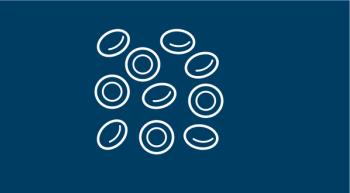
- January/February 2015
- Volume 9
- Issue 1
Recognizing Distress in Patients with Acute Leukemia
A new diagnosis of acute leukemia can pose an immediate threat to life given the substantial morbidity and mortality associated with the disease.
Barbara A. Leone, RN, BSN, CCM
Suzanne Walker CRNP, MSN, AOCN, BC
Barbara A. Leone, RN, BSN, CCM, is Team Leader, Department of Clinical Resource Management at the Hospital of the University of Pennsylvania.
A new diagnosis of acute leukemia can pose an immediate threat to life given the substantial morbidity and mortality associated with the disease. According to the American Cancer Society, there will be approximately 27,000 cases of acute leukemia in 2015, with the number of deaths estimated at nearly 12,000.1
Median survival for those choosing no treatment is only 6 weeks,2 with overall 5-year survival rates ranging from 24% for adults diagnosed with acute myeloid leukemia to 65% for those with acute lymphoblastic leukemia.3 Given these data points, it is quite understandable that the disease trajectory can be punctuated by considerable psychological distress which can disrupt the treatment course at various points along the clinical care continuum. Distress can, in a sense, quietly and surreptitiously sabotage what could be a successful treatment outcome.
Distress is described by the NCCN as a “multifactorial unpleasant emotional experience of psychological (cognitive, behavioral, emotional), social, and/or spiritual nature that may interfere with the ability to cope effectively with cancer, its physical symptoms, and its treatment.”4 Multiple studies cite a rising incidence of psychological morbidity among patients with a variety of malignancies at various stages of disease progression.5-7 At diagnosis and beyond, patients diagnosed with acute leukemia report a decreased quality of life and an increase in depressive symptomatology.8 There is also a significant impact on patient adherence to the plan of care, medication compliance, and follow-through with provider appointments which can lead to increases in emergent oncology clinic visits, emergency department encounters, and hospital readmissions, all of which could have implications for survival.
In January 2014, the American College of Surgeons (ACoS) Commission on Cancer (CoC) released its Cancer Program Standards 2012 Version 1.2.1: Ensuring Patient-Centered Care, which establishes a 2015 requirement that all cancer centers implement programs designed to screen for psychosocial distress.9 This mandate creates a new standard for accreditation and follows closely the call to action in 2007 published by the Institute of Medicine which introduced specific recommendations for the management of distress in cancer populations in its document “Cancer Care for the Whole Patient.”10
Embedded in the new 2015 CoC mandate is the understanding that psychosocial distress surrounding the clinical picture of acute leukemia has historically gone unrecognized and hence untreated.11 Distress has been found to occur in more than 45% of patients diagnosed with acute leukemia.12,13 Yet, there currently exist low rates of distress recognition in the clinical setting with distress undetected by clinicians who are not trained to accurately recognize patients with distress.14
Evidence-Based Guidelines for Distress Management
In 2014, the NCCN published its Distress Management Guideline (the Guideline) addressing the acute need for psychosocial distress screening. The Guideline establishes standards of care for distress management, recommending routine screening of all cancer patients for distress followed by referral to treatment providers according to multiple algorithms.
Multiple self-report inventories exist for the purpose of identifying patients with threshold levels of distress. The Guideline endorses use of the Distress Thermometer which offers a sliding scale measurement of self-perceived levels of distress with additional identifiers offering the patient the opportunity to identify specific sources of distress.4 The Distress Thermometer is to be administered during critical checkpoints along the clinical care continuum such as with initiation of treatment, at discharge from the hospital setting, at relapse, and upon entering the survivorship phase. A score of 4 or greater on the Distress Thermometer signals the treatment team to initiate referrals to mental health professionals for the initiation of appropriate treatment.
Barriers to Guideline Implementation
There are numerous potential barriers to implementation of the 2015 CoC mandate. Programmatic time constraints within the clinic setting divert attention from issues of emotional distress to more immediate issues of acute symptom management. Clinicians’ comfort level with matters surrounding psychosocial distress can be lacking, and hence the issue is never broached with the patient. The burden of additional duties and responsibilities related to screening for distress can add significant strain to an already taxed outpatient clinic setting workflow. Patients themselves may be reticent to discuss matters concerning emotional health given the stigma attached to psychological issues.
Additional barriers to implementation can include lack of staff confidence in the process, a paucity of staff training and support for programmatic initiatives, low acceptance rates of the process, and failure to link treatment to the results of the screening process.11 Lack of familiarity with the Guideline has also been cited as a barrier to effective implementation.8
Recommendations for Nursing Practice
As systems are developed to meet compliance standards of the CoC mandate, nurses are critically positioned to identify distress and to facilitate communication between patients and care providers. Educational programs introducing the Guideline to clinical staff as well as patients and family members would support compliance with the CoC mandate.
Nursing leadership may also wish to consider incorporating the distress screening tool into the initial nursing assessment typically embedded in the Electronic Medical Record. This would facilitate an automatic pathway for the nurse to evaluate for psychosocial distress with each patient contact.
Recognizing psychological distress in patients newly diagnosed with acute leukemia is critical to successful treatment outcomes for these patients. The nurse is well positioned to identify signs of distress, implement distress screening, and work to reduce the burden of fear which may be inexorably linked to survival of these patients.
References
- American Cancer Society. Cancer facts & figures: 2014. http://www.cancer.org/acs/groups/content/@research/documents/webcontent/acspc-042151.pdf. Accessed January 20, 2015.
- Nissim R, Zimmerman C, Minden M, et al. Abducted by the illness: a qualitative study of traumatic stress in individuals with acute leukemia. Leuk Res. 2013;37(5):496-502.
- Howlander N, Noone AM, Neyman N, et al. SEER Cancer Statistics Review, 1975—2009 (Updated August 20, 2012). http://seer.cancer.gov/csr/1975_2009_pops09/.
- National Comprehensive Cancer Network, Inc. NCCN Clinical Practice Guidelines in Oncology: Distress Management. Version 2.2014. http://www.nccn.org/professionals/physician_gls/pdf/distress.pdf.
- Mosher CE, Duhamel KN. An examination of distress, sleep, and fatigue in metastatic breast cancer patients. Psychooncology. 2012;21(1):100-107.
- Suzuki N, Ninomiya M, Maruta S, et al. Psychological characteristics of Japanese gynecologic cancer patients after learning the diagnosis according to the hospital anxiety and depression scale. J Obstet Bynaecol Re. 2011;37(7):800-808.
- Ugalde A, Aranda S, Krishnasamy M, et al. Unmet needs and distress in people with inoperable lung cancer at the commencement of treatment. Support Care Cancer. 2012;20(2):419-423.
- Tavernier SS, Beck SL, Dudley WN. Diffusion of a distress management guideline into practice. Psychooncology. 2013;22(10):2332-2338.
- Commission on Cancer, American Cancer Society. Collaborative Action Plan Guide. https://www.facs.org/~/media/files/quality%20programs/cancer/clp/collaborative%20action%20plan%20guide.ashx. Accessed February 2, 2015.
- Institute of Medicine of the National Academies. Cancer Care For The Whole Patient: Meeting Psychosocial Health Needs. http://www.iom.edu/Reports/2007/Cancer-Care-for-the-Whole-patient-Meeting-Psychosocial-Health-Needs.aspx. Accessed February 2, 2015.
- Mitchell AJ, Vahabzadeh A, Magruder K. Screening for distress and depression in cancer settings: 10 lessons from 40 years of primary-care research. Psychooncology. 2011;20(6):572-584.
- Albrecht TA, Rosenzweig M. (2013). Distress in patients with acute leukemia: a concept analysis. Cancer Nurs. 2014;37(3):218-226.
- Danhauer SC, Tooze JA, Holder P, et al. Healing touch as a supportive intervention for adult acute leukemia patients: A pilot investigation of effects on distress and symptoms. J Soc Integr Oncol. 2008;6(3):89-97.
- Ma X, Zhang J, Zhong W, et al. The diagnostic role of a short screening tool —the distress thermometer: a meta-analysis. Support Care Cancer. 2014;22(7):1741-1755.
Articles in this issue
almost 11 years ago
Big Changes Anticipated in Treatment Paradigmsalmost 11 years ago
Research Strides Change Treatment Landscape for Blood Cancersalmost 11 years ago
"The Sixth Vital Sign": Screening for Psychosocial Distressalmost 11 years ago
Improving Safety and Quality with Oral Chemotherapyalmost 11 years ago
Reaching Out, Getting Answers, to Understand Treatment OptionsNewsletter
Knowledge is power. Don’t miss the most recent breakthroughs in cancer care.
















































































